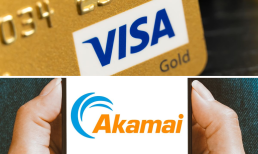In any field, when disruption comes, vocabulary gets scrambled a bit. New words enter the lexicon. Sometimes nouns are used interchangeably – shorthand that short-circuits, in a way, the nuances and distinctions that help us understand what’s really going on.
So it is with technology, and with what might be termed the “token economy” – which includes the “crypto” economy, distinct from bitcoin and blockchain. And don’t even get us started on Dogecoin.
We’ll unpack it all for you, starting right here, with the first installment of a series.
Tokens have been around for a while, but the stage is increasingly being set for ecosystems – of commerce, but also for all manner of exchange – to take advantage of the speed and security offered by tokens to enable innovation across new (and yet to be seen) use cases.
To get a sense of how pervasive cryptos are becoming, consider the news this week that eBay is mulling the introduction of non-fungible tokens (NFTs), and is also examining whether to accept cryptocurrencies as payments. Most have a passing familiarity with NFTs, which are used to turn art, music, tweets, memes and all manner of collectibles into one-time digital offerings, which at times can command astronomical prices into the tens of millions of dollars. Altcoins, like Dogecoin, are digital tokens that have on occasion sparked speculative frenzy (as Bloomberg reported, Robinhood’s crypto trading systems have been swamped with demand).
And in yet another nod toward tokenization, in another part of the commercial realm, Visa said on its earnings call that it had passed a milestone in the first quarter by crossing the two-billion-token mark, up from 1.4 billion in the September period.
Advertisement: Scroll to Continue
But: Blockchain is not bitcoin is not Dogecoin is not the NFT is not the token economy.
The Token Itself
At the conceptual level, a token is simply an object – a coin, if you like, a vessel, really – that represents something else: a value, a bit of information, a good, a service, a contract, which is exchanged between parties. Security tokens, in yet another type of offering, can give recipients fractional ownership of a real asset, such as real estate. Utility tokens are tied to a specific purpose, such as transacting.
Increasingly, in the digital age, tokens are being created through digital means, cryptographically housing those units of meaning and data.
…And The Blockchain
Don’t confuse tokens or cryptos – the bitcoin token or the Ethereum token – with the blockchain. Blockchains are the digital “ledgers” that, through a decentralized database, are used to track the exchanges that occur between parties. Not all assets or holdings that cross blockchains are tokens, and not all tokens need blockchains to cross between parties. Arguably, we’re seeing tokens and blockchains converge.
That’s because at least some components of the blockchain – the layer that underpins the general rise of the “token economy” – are universally attractive to those who wish to participate. Namely: The transactions are peer-to-peer, cutting out intermediaries. Ostensibly, that allows transactions to occur with speed and security – and they are cheaper, because fewer parties involved that “touch” the transaction. What’s traded directly between parties are rights, and sometimes economic values, immutably – to a bitcoin (and its attendant $56,000 value), for example – that flow among digital wallets.
Tokens can be fungible, and can represent a claim on, say, a commoditized holding. Every bitcoin is the same as every other bitcoin, and every tokenized claim to silver or fractional ownership would be the same as every other commensurate quantity. Non-fungible tokens are associated with one-of-a-kind art or an Elon Musk tweet. Tokens can also give a right to, say, enjoy a live-streamed event or provide proof of identity to travel.
Next Up: Bitcoin’s Rise – And Purpose-Built Blockchains
Read More On Crypto:



